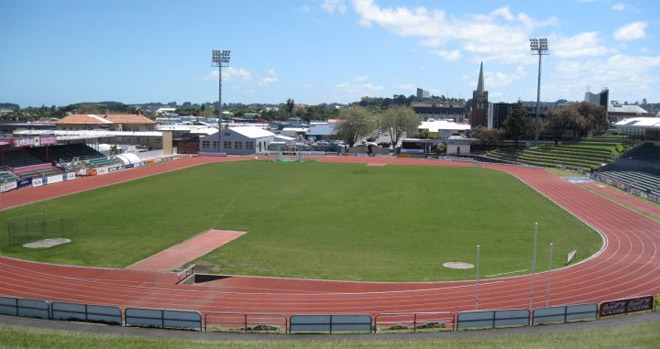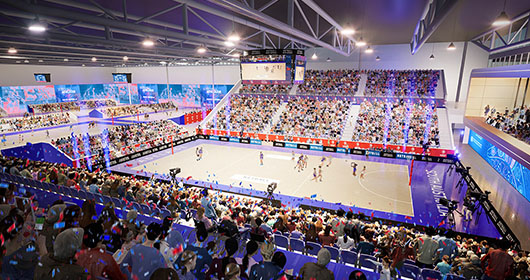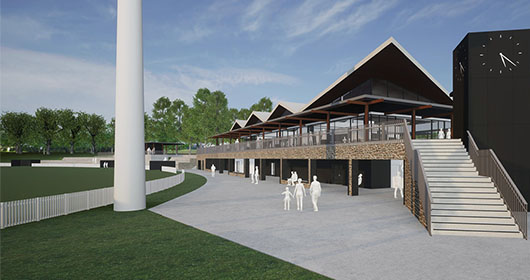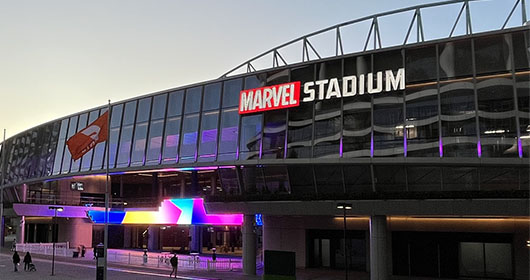Wanganui - Birthplace of the Socceroos

With the Australian national men's football team - the Socceroos, on the cusp of their third-straight FIFA World Cup Finals qualification, it is timely to look back at the origins of the team which has etched itself on the Australian sporting landscape and the venue where the fabled story began. As Roy Hay and David Hearder have explained in online articles previously, the Socceroos name came about in the years leading up to the much-vaunted 1974 World Cup qualification. However the national team itself can trace its roots fifty two years prior to that illustrious event.
Wanganui, a city of 43,000 some 200 kilometres north of Wellington on the west coast of the North Island of New Zealand seems an unlikely setting for the Socceroos story. As with most of New Zealand, the royal blue, black and white 'butchers apron' colours of the Wanganui Rugby Football Union who play in the second-tier Heartland Championship holds favour in this part of the Dominion. Yet their home ground Cooks Gardens has a special place in Australian football history for it was here where the team which we now know as the Socceroos played their first ever game.
The year was 1922. The date, Saturday May 27. A crowd of 2000 ventured to the stadium to see a Wanganui provincial side play the Australian team on the first leg of their inaugural international tour. As was the spirit of the times, the Australian squad consisted only of New South Wales and Queensland players and consequently didn't wear the green and gold but the colours of their respective states - a sky blue jersey with stylized A on left chest, white shorts and sky blue socks with maroon cuffs. It was a look which they copied from the Australian rugby league strips of the period.
The full-time score was a 3-1 win to the visitors with the first ever goal for Australia by Jock Cumberford of Queensland who received a gold medal for his achievement. It was the first game on a lengthy tour which would stretch until mid-July, include three 'Tests' versus New Zealand in Dunedin, Wellington and Auckland, and 11 tour matches against provincial selections. Whilst Australia lost the test series with 3-1, 1-1 and 3-1 results in favour of New Zealand, they fared better in the tour games with scores to the margin of 8-2 over Nelson, 6-1 against Taranaki and 5-0 versus Manawatu.
It would also see the beginning of a tradition that would last until 1954: the 'Soccer Ashes' between Australia and New Zealand. As Peter Allen notes in his biography on Reg Date, the 'Ashes' came about from the cigars smoked by the competing captains at the post-series dinner and were placed into a silver safety razor case which an unnamed New Zealand digger had taken ashore on the landing of Gallipoli. A wooden keepsake made of Australian and New Zealand woods to hold the 'Ashes' inside with a kangaroo and silver fern inscribed became a perpetual trophy. Unfortunately like many other of Australian footballs early traditions, the 'Ashes' became lost to time.
With a capacity at a touch over 20,000, the multipurpose Cooks Gardens complex features the main athletics track/football field along with an adjacent velodrome. Built into a natural amphitheatre, the stadium has an expansive grass hill at one end featuring a stylized hedge feature similar to Sydney's Concord Oval which spells out the cities name. Behind this is a tower resembling a lighthouse and the bike track built into the peak which overlooks the southern parts of the city. The opposite end is home to the scoreboard with only the curator's machinery keeping it company. Two substantial stands on the sides face off against each other giving it a seating capacity of around 3500. The northern side features extensive high grass terracing on either sides of the stand.
Whilst this piece commemorates the first ever game of the Australian men's football team, it would be remiss not to mention the venue also hosted the 1921 North Island versus South Island football match, was the local first class cricket ground until the running lanes were added in the 1990s, and was the scene of Kiwi athlete Peter Snell breaking the mile world record in 1962 on a patchy grass track in front of 15,000 spectators under lights. Strangely, Cooks Gardens for a period had the naming rights sponsorship of Westpac Stadium which was at odds with the Wellington Regional Stadium which shares the same Westpac name. Perhaps more poignantly, I visited the ground in 2009 whilst on a driving holiday of New Zealand's North Island and only knew of it then as the district rugby venue used for the National Provincial Championship. Subsequent serendipitous discovery made me learn of its Australian football connection. It taught me to do investigative research before I visit any prospective sporting venue. If I knew of its significance then I would have given Cooks Gardens the homage it deserves as birthplace of the Socceroos.






